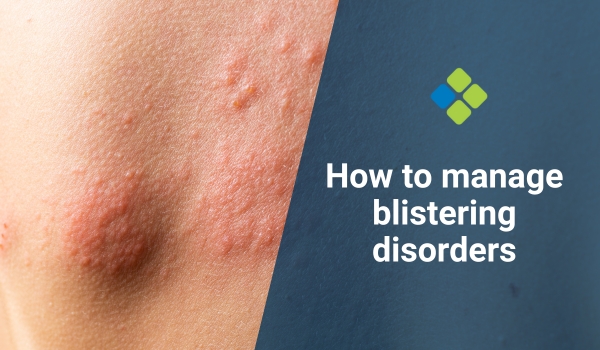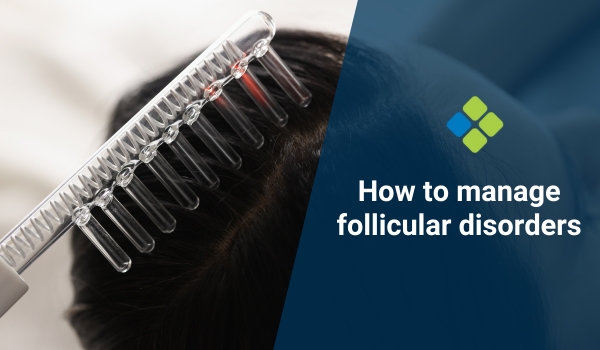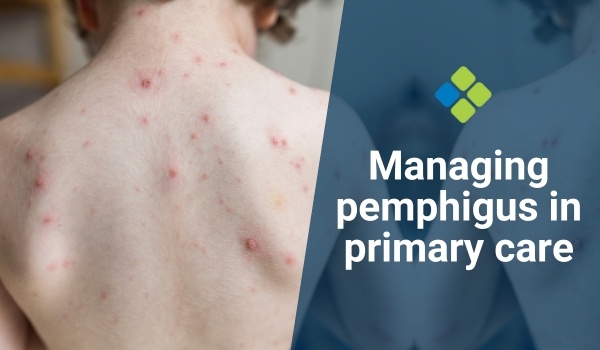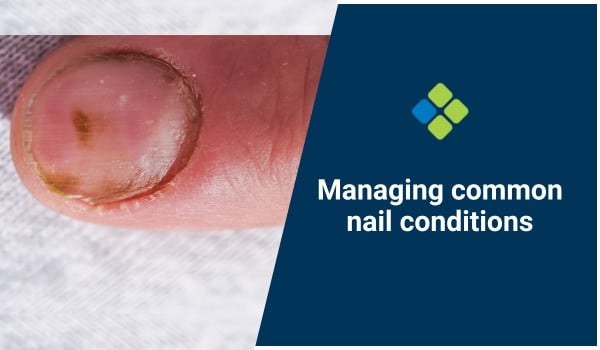How to manage blistering disorders
Read an overview of blistering disorders and learn more about how to effectively manage these dermatology conditions in a primary care setting.

HealthCert Education
Blistering disorders are among the common dermatological challenges GPs may encounter in clinical practice. They encompass a range of conditions that can cause discomfort and distress to patients.
Let's look at an overview of blistering disorders for guidance on how to effectively manage these conditions in a primary care setting.
For further information on this topic, you may be interested to learn more about the HealthCert Professional Diploma program in General Dermatology.
Blistering disorders are characterised by the formation of fluid-filled blisters on the skin or mucous membranes. These blisters can range in size from small vesicles to large bullae. Blistering disorders can be caused by various underlying factors, including:
- Autoimmune processes
- Infections
- Genetic mutations
- External factors (friction and burns)
Training in general dermatology is often crucial for the effective management of blistering disorders as well as for understanding the different types and their respective etiologies.
Common types of blistering disorders
There are several common blistering disorders. These can sometimes have similar symptoms, but their causes and management options often differ significantly. Here’s a short overview:
Bullous Pemphigoid (BP)
This is an autoimmune blistering disorder that primarily affects the elderly. Patients with bullous pemphigoid develop large, tense blisters on their skin, often associated with severe itching. Treatment usually involves oral corticosteroids and immunosuppressants.
Pemphigus Vulgaris
Another autoimmune blistering disorder, pemphigus vulgaris presents with fragile blisters that rupture easily, leaving behind painful erosions. Corticosteroids and immunosuppressants are the mainstay of treatment.
Dermatitis Herpetiformis
This blistering disorder is linked to celiac disease and presents with intensely itchy, small blisters. A gluten-free diet and medications like dapsone can be effective treatments.
Epidermolysis Bullosa (EB)
Epidermolysis bullosa is a genetic blistering disorder that occurs in childhood. It leads to fragile skin and mucous membranes, making patients susceptible to blistering with minimal trauma. Management is often supportive and involves wound care.
Herpes Zoster (Shingles)
Shingles can cause blistering and is due to reactivation of the varicella-zoster virus. Antiviral medications can help manage the condition.
Diagnosis and evaluation
The first step in managing blistering disorders is establishing a precise diagnosis. A thorough patient history, physical examination, and, in some cases, skin biopsies are essential.
Management and treatment options
Topical wound care
Keeping the blisters clean and protected is essential. Using non-adherent dressings and gentle wound cleansers can aid in blister management.
Corticosteroids
In autoimmune blistering disorders, oral or topical corticosteroids are often prescribed to suppress the immune response and reduce blister formation.
Immunosuppressants
Some patients may require immunosuppressive drugs like azathioprine, mycophenolate mofetil, or rituximab to control their blistering disorder.
Pain management
Patients may require pain management, especially in cases of severe blistering disorders. Analgesics and wound dressings can help alleviate pain.
Lifestyle modifications
In cases where blistering is triggered by external factors, advise patients on lifestyle modifications, such as avoiding friction, wearing protective clothing, or managing allergies.
GPs should be equipped to manage common skin conditions like blistering disorders. The ability to accurately diagnose and treat these conditions is invaluable in providing comprehensive care to patients.
– Dr Rosmy De Barros
For further information on this topic, you may be interested to learn more about the HealthCert Professional Diploma program in General Dermatology.
Engaging with this blog can help meet your annual
|

How to claim your CPD hoursIf you consume educational webinars, podcasts, articles, or research on this blog, you can Quick Log CPD hours with the RACGP via the usual self-submission process. You will be asked to reflect on what you have learned, and you will require supporting evidence such as a screenshot.Download the RACGP’s guide to self-recording your CPD here. |
Read another article like this one: How to treat common cutaneous fungal infections
References:
- Baigrie D, Nookala V. Bullous Pemphigoid. [Updated 2023 Mar 2]. In: StatPearls [Internet]. Treasure Island (FL): StatPearls Publishing; 2023 Jan-. Available from: https://www.ncbi.nlm.nih.gov/books/NBK535374/
- Ingold CJ, Khan MAB. Pemphigus Vulgaris. [Updated 2023 Feb 11]. In: StatPearls [Internet]. Treasure Island (FL): StatPearls Publishing; 2023 Jan-. Available from: https://www.ncbi.nlm.nih.gov/books/NBK560860/
- Reunala T, Hervonen K, Salmi T. Dermatitis Herpetiformis: An Update on Diagnosis and Management. Am J Clin Dermatol. 2021 May;22(3):329-338. doi: 10.1007/s40257-020-00584-2. PMID: 33432477; PMCID: PMC8068693.
- Prodinger C, Reichelt J, Bauer JW, Laimer M. Epidermolysis bullosa: Advances in research and treatment. Exp Dermatol. 2019 Oct;28(10):1176-1189. doi: 10.1111/exd.13979. Epub 2019 Aug 8. PMID: 31140655; PMCID: PMC6900197.
- Patil A, Goldust M, Wollina U. Herpes zoster: A Review of Clinical Manifestations and Management. Viruses. 2022 Jan 19;14(2):192. doi: 10.3390/v14020192. PMID: 35215786; PMCID: PMC8876683.

 1800 867 1390
1800 867 1390





